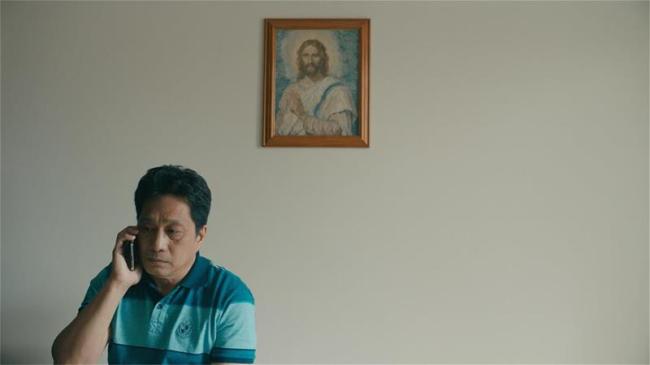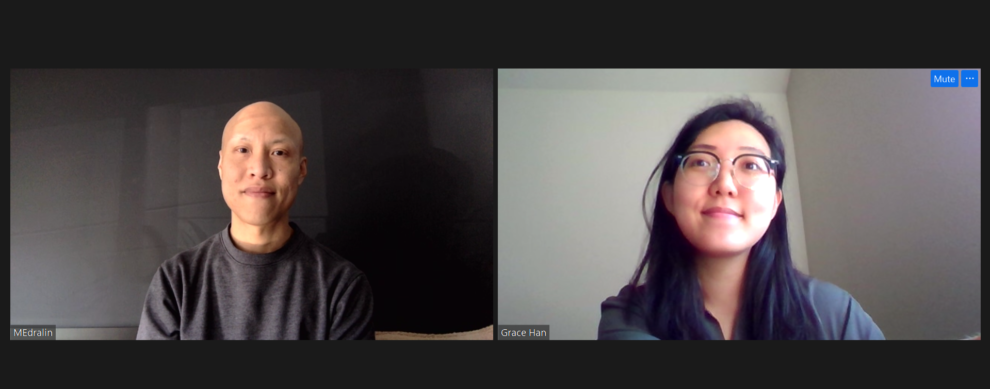After the last few years of a stunning Asian American cinematic success — including “Minari,” “Nomadland,” and “The Farewell,” to name a few — Martin Edralin steps into the scene with SXSW's first Filipino-language film in Narrative Competition, “Islands.” “Islands” follows the slow life of Joshua (Rogelio Balagtas), an excruciatingly shy middle-aged Filipino man living with his parents in Toronto. When his bubbly mother suddenly passes away, however, Joshua quits his janitorial job to take care of his father. His new job is harder than it seems, however, until Marisol (Sheila Lotuaco) — a long-lost cousin — waltzes back into his life, but not without consequence.
Before SXSW, we sat down (over Zoom, of course) with Martin to get around to the behind-the-scenes aspects of his first feature. Martin is calm and collected; even over Zoom it's clear to tell that he's clear and to the point. We talked about many things — about the production details, cinematography, and so on — but most poignantly about the importance of Filipino Canadian action in Asian American cinema.
“Islands” will premiere at SXSW on 16 March at 12:00PM CST.

This interview has been edited and redacted for clarity.
What inspired your film?
[The idea for “Islands”] started around 2015. At the time, my mother had recently retired and my father was retiring. I was thinking about the transitions we all eventually make in life. In many Asian cultures, we [younger generations] take on the responsibility of taking care of our parents. We don't put them in seniors' homes. And that's harder to balance with the independence and pace of life in the West. I wondered how I would manage that.
“Islands” was originally supposed to be shot in the Philippines, but I moved the film to Canada to fulfill a requirement of one of our public funders. We had a lot of fun adding Filipino elements that people might not understand or appreciate unless they were Filipino.
What are some examples?
Like line dancing; the food; religion. The religious idols and a lot of the furniture and décor in the house were actually my parents' or my producing partner's parents' [who were also Filipino]. There are a lot of things in the culture that we see irony or humour in as first-generation Canadians or Americans.
What influenced your decision to move the film to Canada?
Two things. After a couple of research trips to the Philippines, I realized that it would be more cumbersome and expensive than I thought. For example, you can't just rent a piece of equipment there. It comes with technicians that you have to feed and transport, like all the other crew. So when you tally up one or more technicians per equipment item, the 15-20 person crew I would have had shooting in Canada becomes 50 or more shooting in the Philippines.
Additionally, I became eligible for a first feature fund in Canada because they changed their eligibility rules and, as I mentioned earlier, I had to relocate the film. We also had to make a case that it was a “Canadian film” because they require projects to be in English, French, or an Indigenous language. It's kind of crazy. I was born in Canada, educated in Canada and the film is set in Canada with Canadian actors and characters – it's a Canadian movie to me. But I have to say that the funding body didn't push back and they've been very supportive throughout the process of making and premiering the film.
Here in the US, there's been a lot of debate about Asian immigrant films recently — like “Minari” and “The Farewell” — in assessing how “American” they are. What does that conversation look like in Canada?
I wasn't really thinking about it. At that time of production, “Crazy Rich Asians” had just come out, and I think “The Farewell” came out around the time we were in post. The conversations around diversity and representation started to go mainstream, but it wasn't as big as it is now with the foreign language debate around “Minari”. It's not as big of a conversation in Canada yet because we don't have as many films of that scale about the immigrant experience.
“Islands” is the first Filipino-language film in the SXSW Narrative Competition. How do you feel about that?
It was our publicist that pointed out that it's the first Filipino-language film in competition. I didn't really think about the language when I submitted, but it was an interesting fact to discover. I actually thought it was unlikely that a US festival would select a movie like this, especially outside of an international or foreign-language section because “Islands” is in Filipino and because it's from Canada.
The stillness of the camerawork also speaks to the characters' socioeconomic status, their immobility.
It just felt like the right thing to do for the story. The characters are sort of stuck wherever they are in their lives. Having a static camera served the purpose of communicating that.
The house too – I could get a feel for what was going on, but the rooms all felt so disconnected from one another.
It was partly because of the layout of the house, that we had to shoot that way. The house was quite small — much smaller than it appears in the movie. Story-wise, it conveys a sense of disconnection between the characters – all in their own islands – in their own worlds, separated.
I think Joshua especially is on his own island. Could you tell me more about the development of Joshua's character? How did you cast him?
Someone told us about a short film made in Winnipeg that had Filipino actors. So we asked the filmmaker if she would share the film with us because we were looking for Filipino cast. There was something unique about [Rogelio Balagtas] so we asked him to self-tape. It was just okay, but then we did an audition over Skype and he was amazing! He struck the perfect balance of someone that could be lonely and shy without seeming desperate or pathetic. He was just a nice person that you couldn't judge harshly for things he did or didn't do in his life. He hasn't acted much but he naturally brought so much to the character. He was wonderful to work with.
Was it hard to find other Filipino actors for your film?
Yeah, it was hard. To find senior and middle-aged actors of any cultural background is hard. So we went to the [Filipino] community. We stood outside Filipino grocery stores and handed out flyers. We posted casting notices in restaurants and Filipino stores, on social media — anywhere we could get the word out.
What did your timeline look like?
Applying for funding was a long process. But when we started working on the film as it is, in earnest, it took about a year or year and a half. We started pre-production with only an outline because I wasn't sure what casting would be like. I wanted to write to the best cast we could find. I didn't finish the script until a couple months before filming. We shot for about a month and I worked with the editor for around six months. This is how we edited my short films too. We'll cut for a week, take a break for a few weeks, come back and work for a few days – I like to have the space to walk away from it and come back with fresh eyes.

Did COVID-19 interfere with your production at all?
We were really fortunate that we completed production before the pandemic.
And so you chose SXSW?
I thought SXSW was a strange fit at first, mostly because the film is in Filipino. But their programming is offbeat and fun, independent — after I let it sink in, I started to see why they wanted it in their program. I think it's an interesting place for the movie, and I'm really looking forward to how people will respond to it.
How do you feel about your online premiere?
I think something will be lost not seeing this in a theatre with an audience, but over the past year I think we've all grown more accustomed to watching movies at home. I just hope people turn their lights off and put their smartphones away.
Are you working on any other projects at the moment?
I'm working on a documentary in the Philippines that will start once travel restrictions ease. Unfortunately, I can't say much more than that at the moment.
I'm also very interested in directing a screenplay that somebody else has written. I would direct anything that piques my interest, but I'm particularly keen on directing Asian Canadian or Asian American projects. There seems to be a lot of Asian American projects surfacing now and I hope this SXSW premiere will give me more presence in the US to be considered as a director for hire.
And finally: are you thinking of directing more in the Philippines or Canada?
I'd love to do both. Again, I'll direct anywhere and anything that inspires me. But I do want to be more intentional about telling Filipino stories. While Asian cinema and Asians in general are more and more visible in the media, I don't think Filipinos quite are yet. We've been slower to get our faces and stories out there. We have a very unique culture compared to the rest of Asia. All Asian cultures are quite unique, but the Philippines especially has had such a different history from the rest of Asia. I think there will be a lot of interesting and fun stories coming out of the community and I would love to be responsible for some of them.















